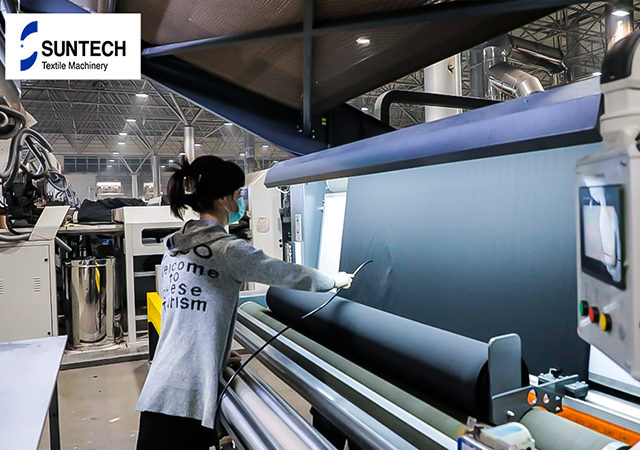Fabric inspection is crucial in the production process of textiles. The purpose of fabric inspection is to identify any defects or irregularities in the fabric before it is cut and sewn into a garment.
1. Unrolling and Spreading Fabric
The first step in fabric inspection is to unroll and spread the fabric on a table or inspection machine.
2. Visual Inspection Defects
The fabric is then visually inspected for any defects such as holes, stains, or misprints. The inspector will use a light table or a handheld light to identify any defects that may not be visible to the naked eye.
3. Measuring and Counting
The fabric is measured to ensure that it meets the required specifications, including length, width, and weight. The inspector will also count the number of rolls or bolts to ensure that the correct quantity has been received.
4. Marking and Grading
Any defects found during inspection are marked with a sticker or marker, and the fabric is graded based on the severity and quantity of defects found.
Re-rolling and packing: After inspection, the fabric is re-rolled and packed for shipment or storage.

Therefore, fabric inspection machines must meet high standards in order to ensure the accuracy and efficiency of the inspection process. For instance, the inspection of fabric width, weft skewness, and warp distortion are all related to the tension of the fabric, which requires fabric inspection machines to be capable of controlling fabric tension in order to guarantee accurate inspection results.
The SUNTECH ST-KFIM series of tension-free inspection machines for knit fabrics can automatically control fabric tension. The machine speed is controlled by a PLC, and the end heads of the fabric rolls are connected to the output shaft of the magnetic powder brake through a mechanical device. The magnetic powder brake's braking force can be adjusted by controlling the current, which is then controlled by the PLC's tension controller. A proximity switch is used as a speed measurement device to form an effective closed-loop control, which can accurately and in real-time adjust the braking force based on changes in the inertia of the fabric rolls, thereby maintaining a constant fabric tension to meet the requirements of automatic fabric inspection. Compared to other tension control fabric inspection machines, this device has more stable, precise, and rapid tension adjustment capabilities, and can effectively improve the efficiency of defect detection on the fabric surface.
The SUNTECH Fabric Inspection Machine boasts several advantages:
Automatic tension-free detection: a unique combination of mechanical and electrical structures ensures constant fabric feeding, inspection, and winding speeds.
Full-width fabric inspection: a fixed inspection table at a 60-degree angle.
Edge control: edge rollers and air blowers are used to control the fabric edges.
Accurate length measurement (in meters): counting error ≤1m/km.
Accurate edge alignment: edge alignment error ≤6mm.
Adjustable fabric roll tension.
Customizable fabric feeding and receiving methods according to customer requirements.
As a veteran textile machinery company with 50 years of technological expertise and equipment manufacturing experience, SUNTECH has over 4,500 customers and 10,000 installed machines worldwide, capable of providing tailored fabric inspection machines to meet production needs. All machines come with a 12-month warranty and free accessories such as edge photoelectric sensors and digital length counters. SUNTECH's prices are highly competitive within the industry. For further information, please contact us.




